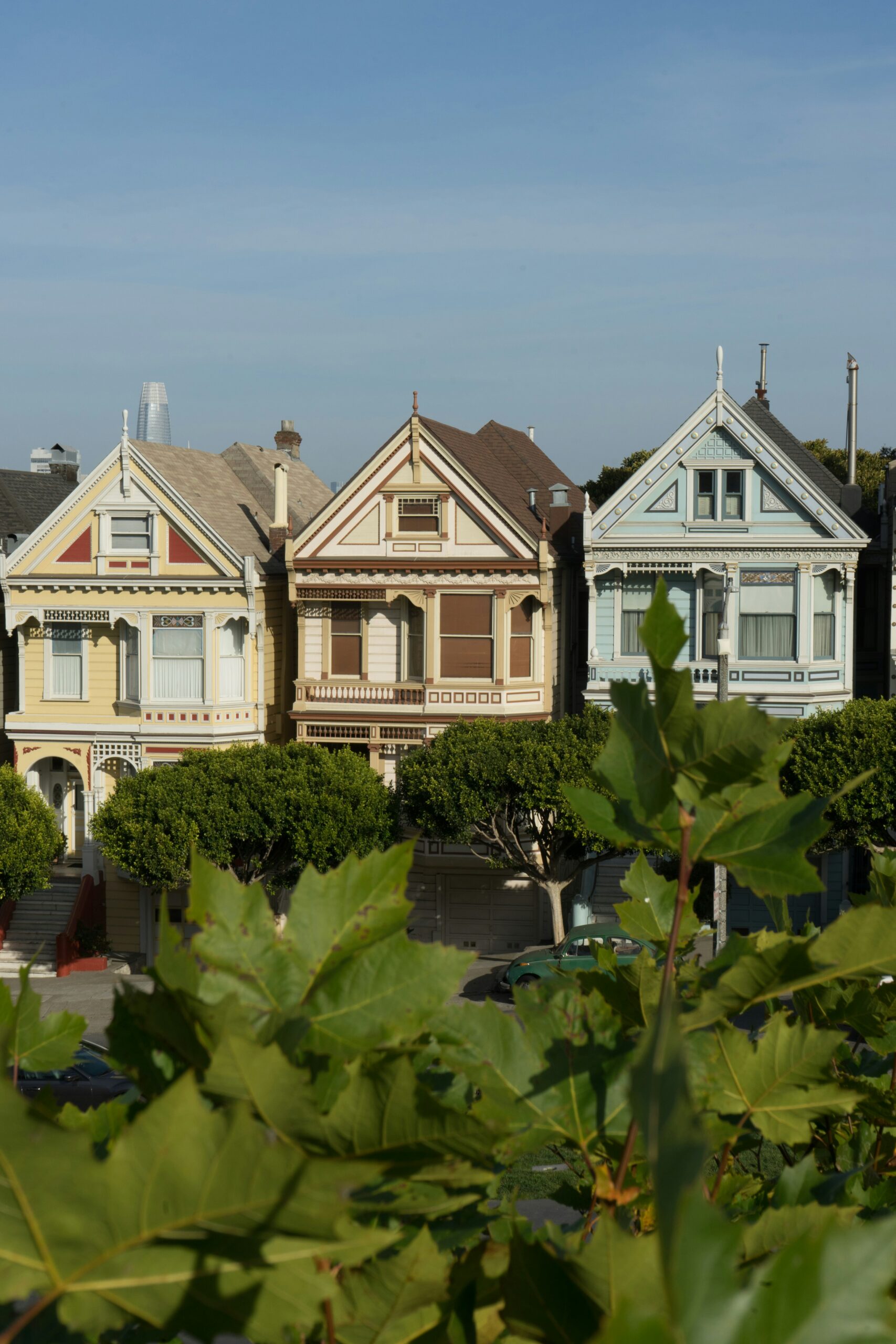Clichés About California That Are Actually True: What Stereotypes Reveal About the Golden State
California’s reputation is filled with stereotypes, and some of them are closer to reality than most would admit. Many clichés about California—like the love for vegan food, a strong surf culture, and an obsession with fitness—have deeper roots in everyday life across the state. These aren’t just exaggerated images from television—they reflect genuine trends and preferences shared by many residents.

Despite the state's incredible diversity, certain patterns keep repeating. Visitors might really notice people bundled up when it’s just 60 degrees or easily spotting a celebrity without making a fuss, showing how some habits and attitudes are truly part of life in Southern California. For more, see these examples of clichés about California that are actually true on Hotels.com.
Exploring which stereotypes are grounded in fact helps cut through the Hollywood myths and gives a clearer picture of what it’s like to live in or visit California. Whether it’s the food scene, outdoor lifestyle, or unique climate habits, these clichés reveal a lot about the state’s real culture.
Clichés About California That Are Actually True: What Stereotypes Reveal About the Golden State
California Dream: Myth Versus Reality
The California Dream has shaped both local culture and national perceptions, offering a lens into changing ideas about opportunity and success. While many see it as a path to quick fame and wealth, the dream’s origins and effects reveal a more complex reality.
Origins of the California Dream
The concept of the “California Dream” did not start in the Gold Rush era, as is commonly assumed. While the Gold Rush in the 19th century attracted many with promises of sudden fortune, the specific term and a broader cultural ideal emerged only in the 20th century. This dream became tied to the notion of boundless opportunity, whether in entertainment, technology, or lifestyle.
Misconceptions persist that anyone arriving in California can easily achieve the American Dream through hard work alone. In reality, early narratives often overlooked social and economic barriers that limited genuine upward mobility. The idea of instant prosperity was frequently exaggerated in literature and media, contributing to the myth. Many today still reference these early ideas when discussing modern California, blending nostalgia with criticism about accessibility and results. More detail about the history and emergence of these myths can be found in this overview of the California Dream’s origins and development.
How the Dream Shapes Modern Perceptions
Current views of California intertwine with persistent clichés, such as the belief that everyone surfs or easily attains fame. While elements of these stereotypes may be rooted in truth, they often gloss over the state’s complex socioeconomic landscape. The cost of living, income inequality, and housing shortages present significant challenges—factors not typically highlighted in the “dream” narrative.
Despite obstacles, California’s reputation as a place for reinvention and self-expression still attracts millions. Industries like technology and entertainment fuel this perception, drawing people worldwide in search of opportunity and creative freedom. The promise of the California Dream remains persuasive, even as many recognize it as both a hopeful aspiration and a myth shaped by selective storytelling. This duality is explored further in the discussion of the state's myth versus reality.

Sunshine, Beaches, and Iconic Landscapes
California's image is shaped by its miles of coastline, dramatic natural features, and a climate that draws travelers year-round. Visitors and locals find themselves surrounded by both sun-soaked beaches and landscapes that range from forests to deserts.
Famous Beaches and Coastal Culture
Southern California is internationally recognized for its beach culture, with spots such as Venice Beach, Santa Monica, and Malibu drawing crowds for surfing, volleyball, and boardwalk activities. The Pacific Coast Highway offers scenic drives along the coast with views of cliffs and open ocean.
Some notable activities popular at these beaches include:
- Surfing, especially in Huntington Beach (“Surf City USA”)
- Beach volleyball at Manhattan Beach
- Relaxed sunbathing and walking in Laguna Beach
Northern California offers a contrasting coastal experience. Places like Half Moon Bay and Bodega Bay feature rugged, foggy shores and dramatic cliffs rather than sandy expanses. The northern coast appeals to travelers who appreciate solitude, cooler weather, and hiking along forested bluffs. The diversity of California's coastal landscapes is a key reason it's considered a destination for both relaxation and adventure. The state's coastline remains a true representation of breathtaking natural landmarks and vibrant outdoor culture.
Diverse Climates Across the State
While sunshine is a popular California stereotype, the state's climate varies widely depending on location and time of year. Southern California is characterized by mild winters and hot, dry summers, supporting outdoor activities nearly every month.
Northern California, however, is cooler and receives more rainfall. Its beaches are bordered by forest and sometimes mountains that reach the coastline. This creates conditions where fog and overcast days are common, even in summer. Such climate variation means visitors can drive from a hot inland valley to a chilly coast in a single afternoon.
California's central region and deserts add further contrast with extreme summer heat in places like Death Valley and dry, sun-filled landscapes. This diversity allows visitors to experience everything from snowy mountains to temperate beaches without leaving the state. The range of climates is a well-known fact about California, distinguishing it from most other destinations in the United States, as discussed on travel and destination sites.

Hollywood and the Entertainment Capital
Hollywood’s reputation as the world’s entertainment hub is anchored in the presence of major studios, historic theaters, and a constant stream of productions. Los Angeles remains a magnet for creative talent, shaping the culture and economy of both L.A. and the global film landscape.
The Impact of the Movie Industry
The movie industry has defined Hollywood since the early 20th century, turning a district of Los Angeles into a worldwide symbol of filmmaking. Today, the area is home to landmark studios such as Paramount Pictures, Warner Bros., and Universal Studios.
This ongoing industry presence supports thousands of jobs for Angelenos, from actors and directors to technical crews and post-production professionals. Major roads in L.A. frequently close for filming, and new productions are announced every week.
Beyond the glamour, the industry drives billions in revenue for Los Angeles each year. The locally-based Academy Awards broadcast from Hollywood unites global audiences and boosts the city’s profile. Location tours and celebrity sightings attract tourists and further deepen Hollywood’s iconic status.
Hollywood’s Continued Global Influence
Hollywood productions shape global perceptions of both California and the United States. Films and television shows created in Los Angeles are distributed worldwide, making American stories and culture accessible everywhere.
Hollywood’s influence is evident not only in what people watch, but also in how the entertainment industry operates internationally. Many countries model their own film industries after Hollywood’s production system, star-driven culture, and promotion methods. You can read more about common misconceptions and surprising truths about Tinseltown at this overview of Hollywood myths and realities.
While digital platforms have made entertainment more diverse, Hollywood remains central because of its skilled workforce and infrastructure. For many aspiring filmmakers, the prospect of moving to L.A. still holds strong appeal, reinforcing Hollywood’s status as the entertainment capital.

Innovation and Economic Growth
California’s economic strength is shaped by a blend of technological innovation and diverse industries. Its infrastructure and workforce help the state maintain a leading position in the global economy.
Tech Boom and Entrepreneurial Spirit
The state’s reputation for fostering new technology companies has deep roots in Silicon Valley. Giants like Apple, Google, and Facebook are headquartered here, drawing thousands of tech professionals from around the world. California’s universities, including Stanford and UC Berkeley, consistently produce graduates ready to contribute to the next wave of innovation.
A major factor in its economic growth is the constant creation of startups and rapid adoption of emerging technologies. Access to investors and skilled workers makes the state attractive to entrepreneurs. By 2023, California’s GDP reached $3.89 trillion, accounting for almost 15% of the United States’ total, making it one of the largest economies globally.
Lifestyle and Stereotypes
California's image is shaped by recurring clichés and visible trends. While not every stereotype is accurate, some realities persist due to the state’s climate, diversity, and unique urban culture.
Stereotypes of California Living
Many believe life in California revolves around beaches, palm trees, and endless sunshine. For residents along the coast, surfing and outdoor activities can be a daily reality. However, this does not represent the entire state, as inland regions and Northern California experience very different climates and lifestyles.
A common stereotype is that everyone wants to be an actor or a model, largely influenced by Hollywood. In truth, the population is diverse, ranging from tech professionals in Silicon Valley to agricultural workers in the Central Valley. The perception that Californians are always laid back persists, yet many juggle long commutes and a high cost of living, especially in urban hubs such as Los Angeles and San Francisco.
Despite the glamor, income disparity and high living costs challenge many middle-class families. Wildfires, traffic, and crowded cities are realities that can shape daily life just as much as the sun and sand.
Wellness, Diversity, and Social Trends
Wellness culture is strong in California, with trends such as vegan diets, yoga, and outdoor fitness being highly visible. Cities like Los Angeles are noted for their enthusiastic embrace of health food, fitness, and alternative lifestyles, reinforcing stereotypes about a health-obsessed population. People often discuss plant-based and gluten-free options, reflecting this broader wellness focus.
California is one of the most ethnically and culturally diverse states in the U.S. This diversity is showcased in its food, festivals, and neighborhoods. Residents are often open to new ideas and shifting social trends, leading to rapid adoption of technology, fashion, and progressive movements. However, the state’s size and variety in regions mean that not every area reflects these values with the same intensity, so some common stereotypes are only partly true and can be misleading.
Table: Common Stereotypes vs. Reality in California
| Stereotype | Reality |
|---|---|
| Everyone is a surfer | Surfing is common on the coast, not everywhere |
| All are actors/models | Many industries, acting is a minority |
| Only sunny beach towns | Includes forests, farmland, and snowy mountains |
| Obsession with wellness trends | True in urban areas, less so elsewhere |
| Uniform lifestyle | Highly diverse by region and population |

Education and Opportunity
California stands out for its strong educational infrastructure and access to opportunities tied closely to its renowned colleges and universities. High-achieving students from across the world are drawn to its diverse campuses and the prospects they offer.
Reputation for Higher Education
Many clichés about California's educational scene stem from its reality as a leader in higher education. The state is home to the University of California and California State University systems, which include prestigious schools like UCLA, UC Berkeley, and Stanford.
California's universities are known for their world-class research, innovation, and academic excellence. Graduates often have access to major opportunities in industries such as technology, entertainment, and healthcare. The state also attracts a huge number of international students, thanks in part to its reputation for educational diversity and opportunity.
Key factors contributing to California's educational standing:
- Large public university and community college networks
- Leading-edge research institutions
- Strong ties to Silicon Valley and the tech industry
Despite challenges in public K-12 education funding, the higher education system consistently produces leaders in science, business, and the arts.
Housing Prices and Cost of Living
Housing costs in California are a significant financial factor for many residents. Compared to several other U.S. states, the difference in pricing can be dramatic, especially in major urban areas.
Reality of Housing Costs
California’s median home price is almost 2.5 times higher than the national average. This steep difference is due in part to demand far outpacing supply, especially near large cities like Los Angeles and San Francisco. In some cities, rents exceed those even in notoriously expensive markets such as New York.
A major challenge is the shortage of affordable housing units. This lack not only drives up home purchase prices but also keeps rental costs high. The situation makes it difficult for both new buyers and renters to find reasonable options, especially for those not making above-average incomes. Residents often cite housing costs as a major reason for financial stress and relocation decisions.
Even outside the biggest cities, prices remain elevated compared to much of the U.S. although smaller towns offer slightly more affordable options. However, the statewide average is still among the highest in the country. For more details on the impact of California’s high housing costs, see this overview.
Comparison to Other States
Compared with states like Kansas, Alabama, or Indiana, California’s housing prices are consistently higher, both for buyers and renters. For example, in states such as Georgia and Arkansas, typical home prices fall far below even the most affordable California markets. Midwest regions, including Illinois, Michigan, and Missouri, also feature much lower median property values.
States on the East Coast, including Connecticut and Maryland, do have expensive housing markets, but outside their largest cities, prices tend to undercut California averages. Even Florida and North Carolina, both of which have seen rising real estate demand, still offer broad swathes of lower-cost housing compared to California.
On the other end of the spectrum, Hawaii sometimes rivals or even surpasses California in home prices, particularly in resort regions. Nearby Nevada and Arizona remain more attainable, drawing some Californians to move in search of better affordability. States such as New Mexico, Montana, Nebraska, and Kentucky maintain much lower entry points for homeowners. For a direct look at why California’s housing is so much more expensive, visit this detailed discussion.

Transportation and Infrastructure Realities
California’s transportation network stands out for its size but faces serious challenges. While the state’s infrastructure connects millions of people, residents experience notable issues in funding, accessibility, and efficiency.
Commutes and Public Transit
Many Californians spend long hours commuting, particularly in urban regions like Los Angeles and the Bay Area. Traffic congestion is a daily struggle, with some of the longest commute times in the nation.
Public transit options exist, yet they often fall short for those who depend on them most. Some systems remain underfunded and overcrowded, leading to unreliable service and limited coverage for working-class communities. These persistent problems mean that lower-income families sometimes lack convenient access to jobs and services, as highlighted in a discussion of California's history of poor public transit.
Major infrastructure investments address highways, bridges, and rail, but funding gaps and high demand slow improvements. Local governments issue billions in bonds, yet considerable work remains, as shown in the California Infrastructure Report Card.







